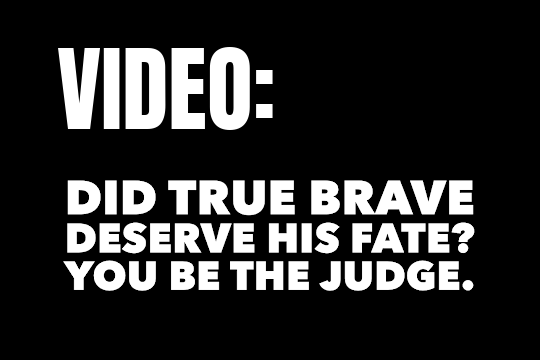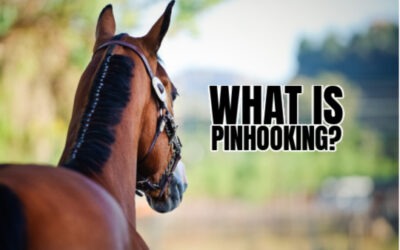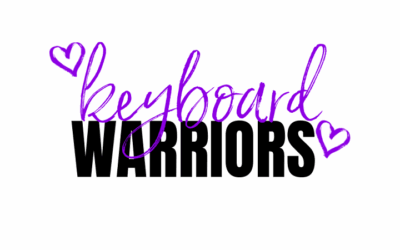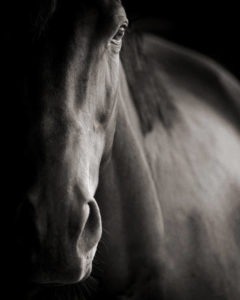TRUE BRAVE’S FATE
The video above features short scenes of horses being slaughtered that may be triggering for some.
True Brave met his end like thousands of others—in a flood of fear, abuse, and betrayal. These were horses taught to trust humans, only to be discarded when no longer profitable.
For decades, slaughter has been the racing industry’s darkest secret. It’s a cruelty that continues today, even if the spotlight has moved. Meramist in Queensland, once a major destination for horses slaughtered for human consumption, has for the time being paused slaughtering for human consumption —but horse slaughter is still legal and has NOT stopped.
Horses are still being sent to knackeries, where they’re killed for pet food. The suffering persists. Please help raise awareness.
It was heartbreaking to witness so many horses bought by meat buyers at the Echuca Sales. In Australia, these buyers are known as “doggers.” At every auction, they take home 30 to 40 horses—most of them Thoroughbreds (TBs) and Standardbreds (STBs)—with the intention of sending them to slaughterhouses, particularly those in Queensland that process horse meat for human consumption.
Once a horse is identified as a TB or STB, its chances of finding a private home are slim.
Racing enthusiasts often try to shift the blame for this crisis onto outsiders, but the root of the problem lies within the racing industry itself.
Too many horses are bred for racing compared to the number of homes available for them after their brief careers end. The unfortunate result is that many are funneled straight into the slaughter pipeline.
Some of these horses had raced just the week before being dumped at Echuca. In many cases, owners pass them off to middlemen, hoping to sever any visible ties to the racing industry.
Others come from trainers well known for discarding their horses in this way.
Make no mistake—this is entirely a racing industry problem.
It’s not the public abandoning these animals. Slaughter has long been the industry’s dirty secret, hidden behind an illusion of glamour and champagne.
From Victoria, horses are sometimes transported up to 1,500 kilometers (nearly 1,000 miles) over the course of 30 hours without food, water, or rest. It’s a cruel and exhausting journey.
It’s easy to direct our anger at the slaughterhouse workers or the doggers, and while their actions are disturbing, the true horror lies with those who profit from this system.
Many of the horse slaughterhouses around the world are reportedly owned by a Belgian brother and sister behind a multinational corporation called Multimeat (Products). This company operates globally, processing horse meat and exporting it to the European Union, where it is sold to countries with a history of consuming horse meat. Today, they claim the meat is used in pet food—but the system remains the same.
Numerous abattoirs across the globe have been exposed for cruelty, and in response, they created a polished website in an attempt to reassure the public that all is well. The reality, however, tells a very different story.
The video above highlights the disregard for EU regulations, which are meant to ensure both animal welfare and strict traceability.
Beyond the inhumane treatment of the horses, there are serious concerns for consumers as well. EU law mandates that horse meat must be free from harmful drug residues—standards that are often ignored.
WARNING: There are some very distressing scenes in the video above. (Our webmaster freely admits that she closed her eyes and just listened in more than a few spots.)
What do YOU think?
Join the conversation on our Facebook page at: https://www.facebook.com/@NoAussieHorseSlaughter
#MOHM NEEDS YOUR HELP!
We’ve been threatened by those in the horse racing industry and those who benefit from horse slaughter more times than we can count.
But we are not going away.
We are going to persist until horse slaughter no longer exists for any purpose within Australia -- and until the horse racing industry makes drastic changes.
We are going to continue our hands-on work to offer lifelong sanctuary to as many horses as possible. We generally have 20 at just one of our locations - at any given time.
We have the acreage to take on more horses as financial support allows.
PINHOOKING
WHAT IS PINHOOKING?While the public sees fascinators, champagne, and glamour, we know the truth behind the racing industry: behind the glitz lies a world of greed, suffering, and exploitation. More and more Australians are beginning to see past the carefully crafted...
KEYBOARD WARRIORS
WE LOVE KEYBOARD WARRIORSThank you to our friends at Ban Horse Slaughter for sharing the following - and we agree wholeheartedly. Be sure to scroll to the bottom, join our mailing list and connect with us on social media.In Defense of Keyboard Warriors: Why Your...










